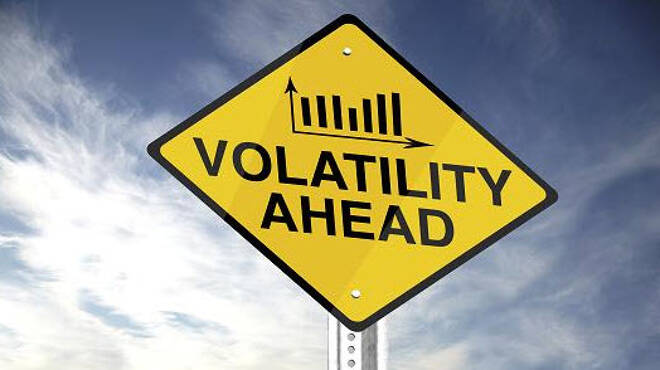Fear and greed are the emotions that generally dominate the capital markets.
Investors psyche will fluctuate between complacency and outright panic at the extremes while climbing a wall or worry during many periods. One of the best ways to measure fear and complacency is to measure implied volatility.
Implied volatility is the estimate of the market of how much underlying security will move over a specific period of time on an annualized basis. It’s not the actual movement of the security which is called historical volatility, it’s instead a market estimate. This estimate is a key component to options pricing as it helps determine the probability that the security will reach a specific strike price on or before the expiration date of an option.
Implied volatile is generally considered a mean reverting process. This means that if fluctuates up and down, and although it might trend for a short period of time, it generally reverts to a long term mean over the long term.
This type of movement is clearly evident when evaluating one of the most prolific implied volatility tools which is known as the VIX volatility index. The VIX measures the at the money implied volatility for the S&P 500 index. At the money means strike prices which are the closest to the underlying price of the S&P 500 index at any time. For example, if the price of the S&P 500 index is 2,000, then the at the money calls and puts are 2,000. The strike price is the price at which the buyer and seller of options agree to exchange the underlying asset such as the S&P 500 index.
The chart of the VIX shows that the level of implied volatility moves up and down around the 200-day moving average, at times, surging but always reverting back to the long term means of the VIX. During periods of undue stress, as was seen when Chinese regulators started devaluing their currency, the VIX will surge. Additionally, when the market is very complacent, the VIX will easy to very low levels.
The key to using the VIX is determine when it’s time to buy protection. Recall, that if you purchase a put option you have the right but not the obligation to sell an asset at a specific price, on or before a certain date. For investors who own a portfolio of assets, you definitely want to purchase protection when its cheap and not when its accelerating higher.
In general, when markets are complacent, protection will be inexpensive and provide you with a good opportunity to buy options. When the VIX is at elevated levels, implied volatility is high and therefor the price of put and call options are expensive. If you are looking to purchase downside protection for stocks, then you want the VIX to be relatively low, making the premiums for put options inexpensive.
In closing, you can use the VIX as a tool to determine the best times to purchase portfolio protection. The key is to buy when protection is cheap and not when fear grips the markets.
About the Author
David Becker focuses his attention on various consulting and portfolio management activities at Fortuity LLC, where he currently provides oversight for a multimillion-dollar portfolio consisting of commodities, debt, equities, real estate, and more.
